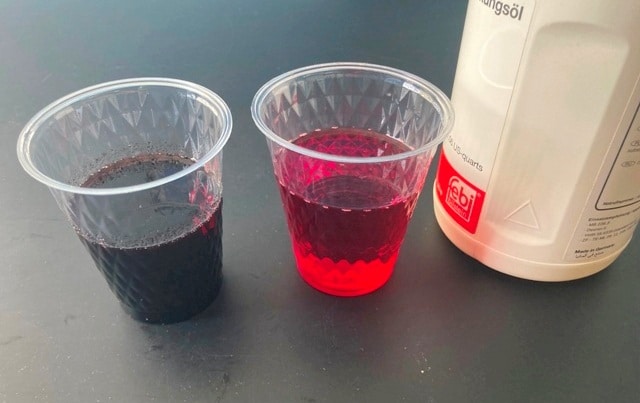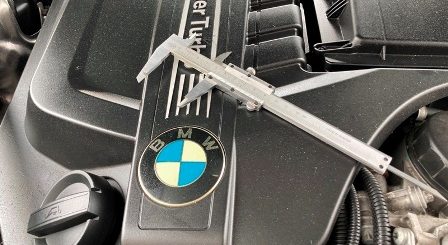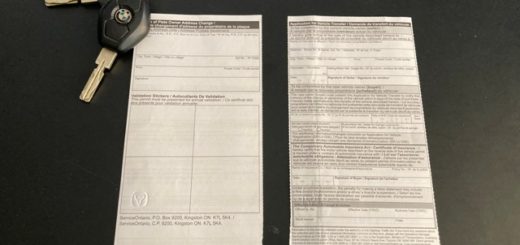Transmission Flush vs Fluid Change
Transmission Flush vs Fluid Change: Automatic transmissions need periodic fluid changes to maintain operational performance. Transmission fluid is crucial element in all this. However, compared to engine oil, transmission fluid is usually forgotten. Most people start asking questions about transmission fluid after their transmissions develops shifting problems. Usually, that’s too late.
Benefits of Automatic Transmission Fluid Changes
Automatic transmission can run a long time without fluid changes. However, as with everything else there is limit. Most important benefit of periodic ATF fluid changes is lengthening lifespan of your transmission. Consider it like an insurance policy. Instead of paying $5,000 or more for a new transmission, you pay $200 every 3 years or so for transmission fluid changes. Same thing with engine oil changes.
Vast majority of automatic transmissions fail because of lack of lubrication or end up clogged from dirty and contaminated fluid. Transmission fluids should be changed every 60,000km or 3 years. Intervals of 60,000 km will guarantee maximum operating automatic transmission lifespan.
If your owner’s manual suggest transmission fluid changes earlier than 60,000km, then use manufactures recommendation for fluid changes intervals. Frequent transmission fluid changes are better for your transmission.
Image below shows old and fresh transmission fluid. Old fluid was removed from a vehicle with only 70,000km on odometer. Old transmission fluid has a dark color and higher viscosity due to contamination.
“What is Transmission Fluid” article from UTI Institute.
Nowadays, some manufacturers are even claiming “Lifetime” transmission fluid, which is not realistic and borderline misleading, to say the least. “Lifetime” is very vague and no further explanation is given. Details on: Is Transmission Fluid Lifetime?
What is Transmission Flush
Automatic transmission flush is a procedure where old transmission fluid is fully removed and replaced with fresh fluid. Transmission is connected to a machine which removes old fluid and uses additives to clean up transmission at the same time. Transmission flush removes 100% of fluid.
Once old fluid is completely removed, automatic transmission will be filled up with fresh fluid. Old fluid is removed by using high pressure. Additives are run thru transmission to clean valve body and other internal transmission components. ‘Pressure” and “additives” being primary words here, will come to that later.
How Transmission Flush Machine Works
Transmission flush machine is connected to transmission fluid lines. Usually transmission cooling lines are used as these are easier to reach and connect. High pressure created by transmission flush machine will push 100% of old fluid out of transmission,valve body, transmission pan and torque converter.
All fluid is removed at once. Then additives are run thru transmission to clean debris and particles. Finally transmission filter is replaced (if equipped) and fresh fluid is added.
Flushing machine circulates about 10 liters of fluid thru a 7 liter transmission system, completely cleaning up debris and deposits. However, there are few things to keep in mind: First, you got to make sure repair facility is using the right transmission fluid when flushing the system. Wrong fluid will cause permanent transmission damage.
Secondly, on older or high mileage cars, debris and deposits in the system are the only thing keeping transmission functioning (pressure seals and clutch plates). Cleaning by using flush method will remove all deposits and debris might lead to transmission failure soon after, or at the very least transmission fluid leaks and loss of pressure.
Vast majority (if not all) of manufacturers recommend transmission Drain and Refill procedure only. Almost none of them recommends automatic transmission flush, with some manufacturers being explicitly against it.
How Much Transmission Flush Costs
Costs for transmission flush vary. As per usual, dealership charge more than independent repair shops. However, most of the cost is fluid itself. Prices of transmission fluid go from $15 per liter to $40 per liter or more on some premium vehicles.
Transmission fluid for European made is usually more expensive. However, generally speaking you are looking anywhere from to $250 to $600 for a transmission flush procedure, fresh fluid and labor included.
Is Transmission Flush Safe?
Well, yes and no. You always take chance with transmission flush. Safety of transmission flush depends mostly on your transmission condition, mileage and how frequently your transmission was serviced in the past.
Transmission flush is safe for newer vehicles or vehicles on which transmission flush is performed frequently. In plain words, transmission flush is safe for cars with a clean transmission and transmission seals in good condition.
However, if you have a high mileage car, a car you just bought and don’t know service history or you never serviced transmission in a long time then you take a chance with transmission flush.
Transmission flush uses high pressure and additives. You always make a compromise when using high pressure to clean something, regardless of what it is. While transmission flush will thoroughly clean your transmission internally, it can also dislodge debris and metal shavings which can block transmission valve body and other transmission components fluid lines.
Another problem with transmission flush is breaking internal transmission seals and gaskets. Older transmissions on high mileage cars have weaker seals and gasket. Transmission seals can fail due to high pressure flush. If that happens, you will need a new transmission.
What is Transmission Fluid Change (Drain and Refill)
Transmission fluid change (Drain/Refill) is completely different procedure from transmission flush. Fluid change works by dilution. Transmission drain plug is opened and old transmission fluid is drained. Then transmission filter is replaced and transmission is filled with fresh fluid.
Transmission fluid change removes about 50% of old fluid. Four liters of fluid are usually removed with fluid change on cars. Transmission on cars takes about 8 to 9 liters of fluid. Normally, bigger vehicles have larger transmissions and larger fluid capacities.
To remove most of old fluid from transmission, fluid changes should be repeated at least twice in short succession. Change fluid, drive your car for few days or a week and repeat procedure again. Each transmission fluid change dilutes old fluid until all fluid is replaced. In short, transmission fluid change is an “easy does it” procedure.
How Much transmission Fluid Change Costs
Again, it mostly depends on type of car you have, transmission fluid price and transmission design itself which will affect labor prices. Generally for a normal car, transmission fluid change should cost about $250 or so. If filter and transmission gaskets are replaced too, labor and parts cost will be higher.
Is Transmission Fluid Change (Drain and Refill) Safe?
Nothing is 100% safe in life but when it comes to automatic transmissions, drain and refill (simple fluid change) is the safest way to maintain your transmission. Nothing else comes close. Drain and refill removes old fluid slowly over a longer period of time, by dilution. Transmission fluid is drained and refilled. A week later you repeat the same procedure and you have fresh fluid in your transmission. As safe and slow as it can be.
Transmission Flush vs Transmission Fluid Change (drain and refill)
As opposed to transmission flush high pressure and all at once procedure, drain and refill is a slow progressive fluid change procedure. Slow usually equals safely. High mileage cars which never received transmission fluid changes are much safer with fluid drain and refill.
Chances of dislodging debris or other impurities are greatly reduced. Drain and refill is safest bet for cars with high mileage which never had transmission fluid change in the past.
On newer cars though, or vehicles which have been serviced regularly, transmission flush is safe to be performed. It will clean thoroughly transmission internals and chances of blockages are reduced to a minimum.
Transmission Flush
- Newer vehicles
- Vehicles with low mileage
- Vehicles which had regular transmission service previously
Transmission Drain and Refill (Fluid Change)
- High mileage vehicles (over 100,000)
- Vehicles with unknown past service history
- Vehicles with high mileage which never had transmission fluid change
What if Transmission Breaks Down After Fluid Change or Transmission Flush
One thing to make clear: if unfortunately your transmission breaks down soon after transmission flush or transmission fluid change (drain and refill), repair shops will not take any responsibility, and rightly so. It will be 100% your responsibility to take a chance and choose which procedure to perform and deal with consequences that might follow.
It’s your vehicle and repair shop is only performing a standard procedure you requested, being that a transmission flush or transmission fluid change.
Is High Pressure and Extra Additives Needed to Clean Automatic Transmission
Most likely not. Fresh transmission fluid in itself has cleaning additives, and it has a lot of it. Transmission fluid has so many cleaning agents and additives that its even used as engine flush additive.
One procedure to clean your engine is to add half a liter of transmission fluid just prior to oil change. Idle vehicle for 15 minutes and replace engine oil (do not drive it, idle only). You will clearly see what transmission fluid can do when it comes to cleaning debris and sludge.
Conclusion: Transmission Flush vs Transmission Fluid Change
On high mileage vehicles you always take a chance when changing transmission fluid, regardless of procedure you choose to perform. However, drain and refill is a more natural procedure, carries less risks and keep your transmission running just a s well.
Drain and refill reduces chances of blocked transmission lines and breaking of internal transmission seals or gaskets. As a result, drain and refill it is considered safest procedure for older vehicles or high mileage vehicles which never had a fluid change.
Transmission flushes on the other hand, works best and are safe to be performed on low mileage and newer vehicles or vehicles which had regular transmission service previously.
How about engine oil? How long to go between oil changes? Engine Oil Change Intervals.
(If you are also looking for a fast and safe solution to sell your car, more here on “How To Sell Your Car Fast” )
Comments: If you have any questions or suggestions related to this post or Used Car Toronto in general, don’t hesitate to use comment section below.














This article was extremely clear and easy-to-follow for a car maintenance newbie. Thanks in advance.
Feb 2025